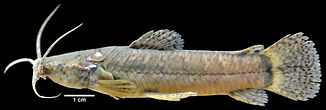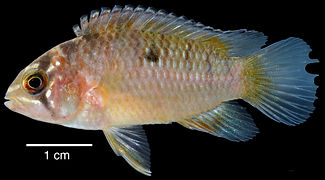I'm a title. Click here to edit me
I'm a paragraph. Click here to add your own text and edit me. It’s easy. Just click “Edit Text” or double click me to add your own content and make changes to the font. Feel free to drag and drop me anywhere you like on your page. I’m a great place for you to tell a story and let your users know a little more about you.
This is a great space to write long text about your company and your services. You can use this space to go into a little more detail about your company. Talk about your team and what services you provide. Tell your visitors the story of how you came up with the idea for your business and what makes you different from your competitors. Make your company stand out and show your visitors who you are.
At Wix we’re passionate about making templates that allow you to build fabulous websites and it’s all thanks to the support and feedback from users like you! Keep up to date with New Releases and what’s Coming Soon in Wixellaneous in Support. Feel free to tell us what you think and give us feedback in the Wix Forum. If you’d like to benefit from a professional designer’s touch, head to the Wix Arena and connect with one of our Wix Pro designers. Or if you need more help you can simply type your questions into the Support Forum and get instant answers. To keep up to date with everything Wix, including tips and things we think are cool, just head to the Wix Blog!
2011–13 Expeditions to the Kuribrong River and Amaila Falls, Guyana

Overview
Twice in 2011 and once in 2013, I was asked to lead research teams to study fish communities of the Kuribrong River, a left-bank (northern) tributary of the Potaro River, part of the Essequibo River drainage in Region 8, Guyana. The overall goal of this field-work was to evaluate the potential environmental impact of a hydroelectric dam that had been proposed for the Kuribrong River at Amaila Falls, which is a major waterfall and rapids complex created by the Kuribrong River's nearly 370 vertical-meter decent from an escarpment of the western Guiana Shield. During initial surveys of the upper Kuribrong River upstream of Amaila Falls in Spring of 2011, four potentially endemic and undescribed fish species were discovered: a new tetra (Characidae: Astyanax sp.), a new South American darter (Crenuchidae: Characidium amaila Lujan et al. 2013), a new Lebiasina sp. (Lebiasinidae) and a new catfish (Heptapteridae: Brachyglanis sp.).
Each of these species fell under the protection of the strict environmental safeguards of the Inter-American Development Bank, which was considering financing the dam, because the dam could have posed a threat to their critical natural habitat. To test this hypothesis, I led a second survey of the upper Kuribrong River in Fall of 2011 with the objective of sampling portions of its watershed that were outside the direct area of impact from the dam and its reservoir. All but the Characidium sp. were found to be widespread habitat generalists throughout much of the upper Kuribrong River watershed. The Characidium sp. was collected only from shallow, rocky rapids habitats, of which there only appeared to be five clusters in the entire upper Kuribrong River watershed. A third expedition was funded in 2013 to precisely map these mesohabitats and estimate population densities and microhabitat preferences in each. That same year, I published a description of this species as Characidium amaila.
Ultimately, the Amaila Falls Hydroelectric Project was cancelled because the financial cost would have been too great. Unfortunately, environmental costs continue to be incurred in the Kuribrong River as the road that was built to service the proposed dam is now left open to gold miners, timber harvesters and hunters. Gold mining in the Kuribrong River is especially devastating to fish communities, perhaps much more so than a dam would have been. At the very least, the research that my colleagues and I conducted in the Kuribrong River should provide a baseline for understanding the intact biodiversity of this area, which will be essential for any future conservation efforts.
Other vertebrate biologists involved in this research include Brazilian fish biologists Flávio Lima, Tulio Teixeira and Tiago Pessali and herpetologists Brice Noonan and Pedro Bernardo. Voucher specimens collected during this trip are now cataloged at the ROM (field number prefix GUY11 and GUY13) and MZUSP, where they continue to benefit ichthyological research. Published papers that have already benefited from collections and observations made during this trip include the following:
Expedition I Photos






















1
2
3
4
5
6
7
8
9
10
11
12
13
14
15
16
17
18
19
20
21
22








23
26
24
25
27
28
29
30






31
32
33
34
35
36
1. The University of Guyana Centre for Biodiversity and (2.) its fish collection. 3. Guyanese biologist Aneeza Khan and I wait with our pile of gear for a flight to Kaieteur Falls. 4. Flying from the coastal plains over the Guiana Shield escarpment. 5. Kaieteur Falls. 6. Helicopter taking us to our field camp meeting us at the airstrip of Kaieteur Falls National Park. 7. Surveying the pristine tropical rainforest and spectacular vistas of the Guiana Shield by helicopter. 8. An aerial view of the Upper Kuribrong Camp (UKC) where we would be spending the next few weeks. 9. An aerial view of Rapids 3, where we would first discover Characidium amaila. 10. Sleeping quarters of UKC during a rainstorm. 11. Sampling a forest pool with rotenone. 12. Our fishing guides and staff enjoy looking at photos of Guiana Shield fishes from a recent issue of the Bulletin of the Biological Society of Washington. 13. Our excellent chef, who went by the name 'Black Boy' prepares dough for some very tasty dinner rolls. 14. The standard Guyanese field oven: a 50-gallon drum turned on its side, which (15.) worked remarkably well. 16. Deep fried tetras, fresh from the river (Bryconops and Moenkhausia spp.). 17. The UKC field laboratory. 18. Brice Noonan preparing herp specimens. 19. Botanist Charles Zartman and his assitants prepare plant specimens. 20. The entire fish crew teams up to collect fishes from a rotenone station. 21. The UKC laboratory at night. 22. A view of the beautiful Pakaraima Mountains from our helicopter as we move camps. Photos with archosaurs, including 23. a spectacled caiman (Caiman crocodilus), 24. a crimson topaz hummingbird (Topaza pela), and 25. a white-plumed antbird (Pithys albifrons). 26. Frog-eating bat (Trachops cirrhosus). 27. With Brazilian ichthyologist Flávio Lima. 28. Pulling fish out of a seine with Brice Noonan. 29. Part of the sampling team at Mountaintop Camp, just above Amaila Falls (to the left). 30. Tulio and I wait to board a flight to Kopinang Village in the Potaro River drainage. 31. After a very hairy landing in Kopinang Village, we are greeted by the local Patamona Amerindian community. 32. and 33. Trucks return people and gear to Georgetown via the overland route. 34. A box full of bird specimens is prepared for shipment to MZUSP in São Paulo, Brazil. 35. Bat and 36. small mammal specimens also prepared for export.
Fishes


1
2

3

4

5

6


7
8

9










1. Astyanax sp. 1, 2. Astyanax sp. 2, 3. Astyanax cf. mutator, 4. Bryconops affinis, 5. Moenkhausia browni, 6. Moenkhausia oligolepis, 7. male and 8. female Poecilocharax bovalii, 9. Characidium amaila, a new species described based on specimens collected during this fieldwork, 10. a still undescribed Lebiasina species, 11. Pyrrhulina filamentosa, 12. Anabelpsoides waimacui, 13. Brachyhypopomus beebei, 14. Callichthys callichthys, 15. Trichomycterus n.sp., 16. Brachyglanis cf. magoi, immature 17. and mature 18. Corymbophanes cf. kaiei, 19. Krobia potaroensis, 21. Crenicichla alta, male 20. and female 22. Nannacara bimaculata.
10
11
12
13
14
15
16
17
18
21

19


20
22
Sponsors
This research was funded by the Inter-American Development Bank.
